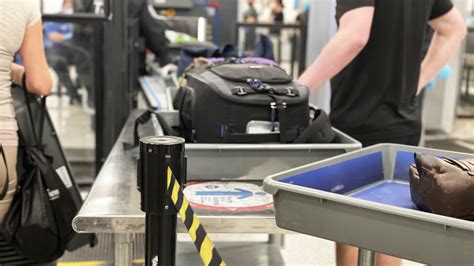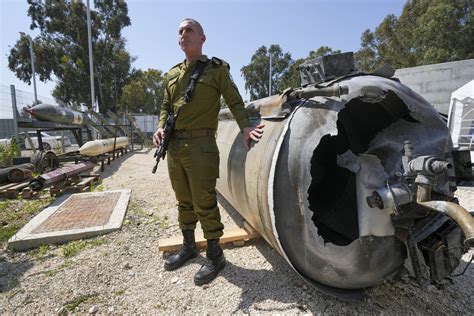
A harrowing Air India Express flight experienced a catastrophic aborted takeoff in Abu Dhabi, resulting in significant damage to the Boeing 737-800 aircraft and prompting an investigation by aviation authorities. Newly surfaced footage captures the terrifying moment the plane rapidly accelerated, only to be brought to a sudden and violent halt just before reaching takeoff speed, leaving the aircraft severely damaged.
Aviation authorities are investigating a serious incident involving an Air India Express Boeing 737-800 that suffered substantial damage during a rejected takeoff from Abu Dhabi International Airport (AUH). The incident occurred on Friday, February 9, 2024, as the aircraft was preparing to depart for Calicut (CCJ) in India. The newly released video footage vividly shows the plane accelerating down the runway before abruptly aborting its takeoff at a high speed.
The Air India Express flight IX348, bound for Calicut, India, was carrying 175 passengers and six crew members when the incident unfolded. According to reports, the pilots initiated a rejected takeoff at a very high speed, close to V1, the decision speed beyond which a takeoff should typically not be aborted. The reasons for the rejected takeoff remain under investigation, but the consequences were immediately evident in the dramatic footage that has emerged.
The video clearly shows the aircraft speeding down the runway before experiencing a jarring deceleration. The impact of the aborted takeoff caused significant damage to the plane, particularly to its landing gear and one of its engines. Debris from the damaged components can be seen scattered around the runway in the aftermath.
“Air India Express flight IX348, scheduled to operate from Abu Dhabi to Calicut on February 9, rejected take off at Abu Dhabi airport. The aircraft has returned to the bay and all passengers and crew have been safely deplaned,” the airline said in a statement. All 175 passengers and six crew members were safely evacuated from the aircraft following the incident. Alternative arrangements were made to fly the passengers to their intended destination.
The Directorate General of Civil Aviation (DGCA), India’s aviation regulatory body, has launched a formal investigation into the incident. The investigation will seek to determine the precise cause of the rejected takeoff, assess the extent of the damage to the aircraft, and review the airline’s safety protocols and procedures.
The incident raises serious questions about the circumstances leading to the aborted takeoff and the decision-making process of the flight crew. Investigators will be scrutinizing flight data recorders (black boxes) and cockpit voice recorders to gain a comprehensive understanding of what transpired in the cockpit during the critical moments before the incident.
The severity of the damage to the Boeing 737-800 suggests that the aircraft may be out of service for an extended period, pending extensive repairs and inspections. Aviation experts emphasize the importance of a thorough investigation to prevent similar incidents from occurring in the future and to ensure the safety of air travel.
Detailed Account of the Incident
On February 9, 2024, Air India Express flight IX348 was preparing for its scheduled departure from Abu Dhabi International Airport (AUH) to Calicut International Airport (CCJ) in India. The Boeing 737-800 aircraft was carrying 175 passengers and six crew members. As the aircraft accelerated down the runway for takeoff, the pilots initiated a rejected takeoff at a high speed, close to V1.
The decision to abort the takeoff at such a late stage is unusual and suggests that the pilots perceived a significant safety risk. V1, or decision speed, is a critical parameter in aviation. It represents the speed at which the pilots must commit to either continuing the takeoff or aborting it. Above V1, the remaining runway length may be insufficient to safely bring the aircraft to a stop.
The abrupt deceleration caused by the rejected takeoff resulted in significant stress on the aircraft’s structure. The landing gear, designed to absorb the impact of landing, was subjected to forces exceeding its normal operating parameters. As a result, the landing gear sustained substantial damage. One of the aircraft’s engines also suffered damage, possibly due to the rapid deceleration or ingestion of foreign object debris (FOD) during the aborted takeoff.
Following the incident, emergency services were immediately dispatched to the scene. Passengers and crew were safely evacuated from the aircraft and transported back to the terminal. Air India Express arranged alternative flights for the passengers to reach their destination in Calicut.
Investigation Details and Scope
The Directorate General of Civil Aviation (DGCA) has initiated a comprehensive investigation into the incident. The investigation will focus on several key areas, including:
- Reasons for the Rejected Takeoff: Determining the specific factors that prompted the pilots to abort the takeoff at a high speed is paramount. Investigators will examine flight data recorder (FDR) and cockpit voice recorder (CVR) data to understand the sequence of events leading up to the rejected takeoff. They will also interview the pilots and other crew members to gather firsthand accounts of what transpired.
- Aircraft Condition and Maintenance Records: A thorough inspection of the damaged aircraft will be conducted to assess the extent of the damage and identify any pre-existing mechanical issues that may have contributed to the incident. Maintenance records will be reviewed to ensure that the aircraft was properly maintained and that all required inspections were carried out.
- Adherence to Standard Operating Procedures (SOPs): Investigators will examine whether the flight crew followed established standard operating procedures (SOPs) during the takeoff and rejected takeoff procedures. Any deviations from SOPs will be carefully analyzed to determine their potential impact on the incident.
- Environmental Factors: Environmental conditions, such as weather and runway conditions, will also be considered as potential contributing factors. The investigation will assess whether factors such as wind shear, runway contamination, or poor visibility played a role in the incident.
- Air Traffic Control (ATC) Communications: Communications between the flight crew and air traffic control (ATC) will be reviewed to ensure that there were no misunderstandings or communication breakdowns that may have contributed to the incident.
The investigation is expected to take several months to complete. Once the investigation is concluded, the DGCA will issue a final report outlining the findings and recommendations for preventing similar incidents in the future.
Impact on Air India Express and Aviation Safety
The incident involving Air India Express flight IX348 has several significant implications for the airline and the broader aviation industry:
- Operational Disruptions: The damaged Boeing 737-800 will be out of service for an extended period, which will likely disrupt Air India Express’s flight schedules and operations. The airline will need to find alternative aircraft to cover the affected routes, which could lead to delays and cancellations.
- Financial Costs: The cost of repairing the damaged aircraft will be substantial. In addition to the repair costs, Air India Express may also face financial penalties from regulatory authorities if the investigation reveals any violations of safety regulations.
- Reputational Damage: The incident could damage Air India Express’s reputation and erode public confidence in the airline’s safety record. The airline will need to take steps to reassure passengers that it is committed to safety and that it is taking all necessary measures to prevent similar incidents from occurring in the future.
- Enhanced Safety Measures: The investigation into the incident is likely to lead to enhanced safety measures and procedures for Air India Express and other airlines. These measures could include stricter maintenance requirements, improved pilot training, and enhanced monitoring of flight operations.
- Industry-Wide Review: The incident may prompt a broader review of aviation safety standards and procedures by regulatory authorities and industry organizations. This review could lead to changes in regulations, training programs, and operational practices across the aviation industry.
Boeing 737-800 Aircraft
The Boeing 737-800 is a widely used narrow-body airliner that is part of the Boeing 737 Next Generation (NG) family. It is one of the most popular aircraft in the world, known for its reliability, efficiency, and versatility.
- Specifications: The Boeing 737-800 typically seats between 162 and 189 passengers in a two-class configuration. It has a range of approximately 2,935 nautical miles (5,436 kilometers) and a cruising speed of Mach 0.785 (838 kilometers per hour).
- Safety Record: The Boeing 737-800 has a generally good safety record. However, there have been some notable accidents and incidents involving the aircraft, including the crash of Ukraine International Airlines Flight 752 in Iran in 2020 and the Lion Air Flight 610 crash in Indonesia in 2018.
- Operational Considerations: The Boeing 737-800 is used by airlines around the world for a variety of routes, including short-haul domestic flights and medium-haul international flights. Its versatility and efficiency make it a popular choice for airlines operating in diverse markets.
Importance of Black Boxes
The flight data recorder (FDR) and cockpit voice recorder (CVR), commonly known as black boxes, are critical components of any aircraft accident investigation. These devices record valuable information about the aircraft’s performance and the flight crew’s actions during a flight.
- Flight Data Recorder (FDR): The FDR records hundreds of parameters related to the aircraft’s flight, including altitude, airspeed, heading, engine performance, and control surface positions. This data can be used to reconstruct the aircraft’s flight path and identify any anomalies that may have contributed to an accident.
- Cockpit Voice Recorder (CVR): The CVR records audio from the cockpit, including conversations between the pilots, communications with air traffic control, and any other sounds that occur in the cockpit. This audio can provide valuable insights into the flight crew’s decision-making process and any communication breakdowns that may have occurred.
- Data Analysis: The data from the FDR and CVR is carefully analyzed by investigators to determine the sequence of events leading up to an accident. This analysis can help to identify the cause of the accident and to develop recommendations for preventing similar incidents in the future.
- Durability: Black boxes are designed to withstand extreme forces and temperatures, ensuring that the data they contain can be recovered even in the event of a catastrophic accident. They are typically housed in a crash-resistant container that is designed to protect the recording media from damage.
Rejected Takeoff Procedures
A rejected takeoff is a critical procedure that pilots must be prepared to execute in the event of a serious malfunction or safety risk during the takeoff roll. The decision to abort a takeoff is a complex one that must be made quickly and decisively.
- Decision Factors: Pilots may decide to reject a takeoff for a variety of reasons, including engine failure, fire, loss of control, tire burst, or any other indication of a serious problem. The decision to abort the takeoff must be made before reaching V1, the decision speed.
- Procedure: When a rejected takeoff is initiated, the pilots must immediately reduce thrust to idle, apply maximum braking, deploy the thrust reversers (if available), and activate the emergency braking system. The goal is to bring the aircraft to a stop as quickly and safely as possible within the remaining runway length.
- Challenges: Rejecting a takeoff at high speed is a challenging maneuver that requires precise coordination and quick reflexes. The forces involved can be significant, and the risk of overrunning the runway is always present.
- Training: Pilots undergo extensive training in rejected takeoff procedures to ensure that they are prepared to handle this critical situation effectively. This training includes simulator exercises and classroom instruction on the factors that must be considered when making the decision to abort a takeoff.
The Role of Aviation Safety Regulations
Aviation safety regulations play a critical role in ensuring the safety of air travel. These regulations are developed and enforced by regulatory authorities such as the Federal Aviation Administration (FAA) in the United States and the Directorate General of Civil Aviation (DGCA) in India.
- Scope: Aviation safety regulations cover a wide range of areas, including aircraft design and maintenance, pilot training and certification, air traffic control procedures, and airport operations. These regulations are designed to minimize the risk of accidents and to ensure that air travel is as safe as possible.
- Enforcement: Regulatory authorities have the power to inspect aircraft, audit airlines, and impose penalties for violations of safety regulations. They also have the authority to ground aircraft and suspend or revoke pilot licenses if necessary.
- Continuous Improvement: Aviation safety regulations are constantly evolving in response to new technologies, emerging risks, and lessons learned from past accidents. Regulatory authorities work closely with industry stakeholders to identify areas where safety can be improved and to develop new regulations to address these areas.
- International Cooperation: Aviation safety is a global concern, and regulatory authorities around the world cooperate to harmonize safety standards and procedures. This cooperation helps to ensure that air travel is safe regardless of where it takes place.
FAQ Section
1. What caused the Air India Express flight IX348 to abort its takeoff in Abu Dhabi?
The exact cause is under investigation by the Directorate General of Civil Aviation (DGCA). The flight rejected its takeoff at a high speed, close to V1. Investigators are examining flight data recorders (FDR) and cockpit voice recorders (CVR) to understand the reason for the aborted takeoff, assessing potential factors such as engine failure, mechanical issues, or other safety concerns.
2. Were there any injuries to passengers or crew members?
No, all 175 passengers and six crew members were safely evacuated from the aircraft after the rejected takeoff. Alternative arrangements were made to transport the passengers to their intended destination in Calicut, India.
3. What is V1, and why is it significant in this incident?
V1, or decision speed, is a critical parameter in aviation. It’s the speed beyond which a pilot can no longer safely abort a takeoff on the remaining runway. Rejecting the takeoff at a speed near V1 suggests a significant perceived safety risk, making the decision to abort highly unusual.
4. What kind of damage did the aircraft sustain?
The Boeing 737-800 sustained significant damage, particularly to its landing gear and one of its engines. The abrupt deceleration put excessive stress on the landing gear, and debris from the damaged components was scattered on the runway. The aircraft is expected to be out of service for an extended period pending repairs and inspections.
5. What steps are being taken to prevent similar incidents in the future?
The DGCA investigation will determine the specific causes of the rejected takeoff and identify any violations of safety regulations. This may lead to enhanced safety measures, stricter maintenance requirements, improved pilot training, and enhanced monitoring of flight operations for Air India Express and potentially other airlines. The aviation industry may also conduct a broader review of safety standards and procedures.









